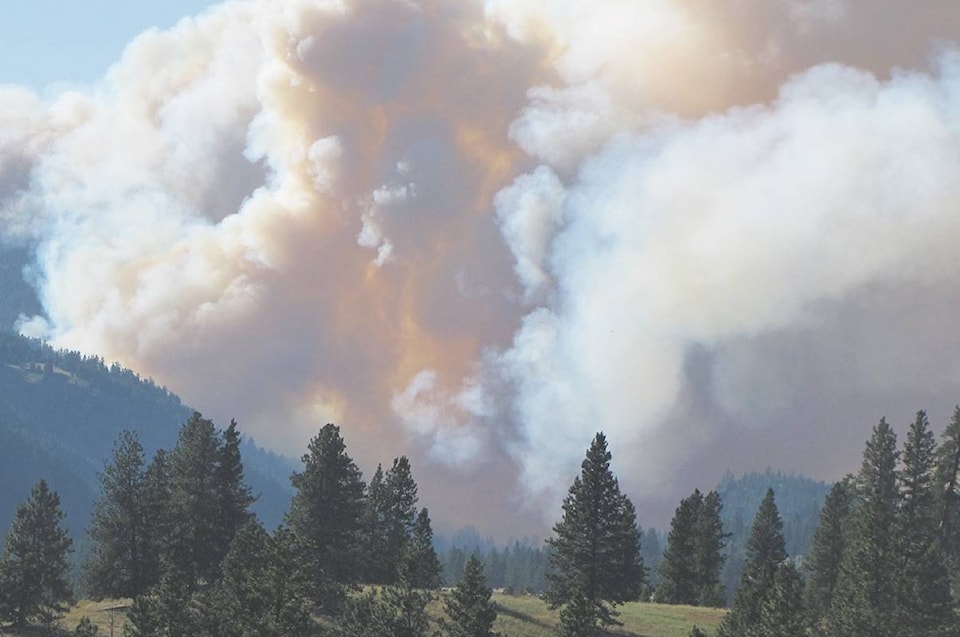While wildfires rage across B.C., residents fight to save lives, possessions, property and animals.
It91¬„¡ƒ ”∆µôs not the first such crisis in this province, and is not going to be the last.
Former fire chief Gerry Zimmermann of Kelowna watches, and thinks back to his own experience in one such inferno.
He recalls comments from California scientists following the
91¬„¡ƒ ”∆µúThey warned us that situations like we had would become common occurrences moving forward.91¬„¡ƒ ”∆µù
Zimmermann, now retired, was the Kelowna fire chief 14 years ago when roared through the southern part of his city, destroying more than 230 homes.
He became the face of the firefighting effort, down-to-earth with the media and public.
City firefighters, aided by other B.C. and Alberta fire crews, battled the advancing flames.
EDITORIAL:
Ultimately, they won control, saving individual neighbourhoods and an entire city, in what became a watershed moment in Kelowna91¬„¡ƒ ”∆µôs history.
With 150 wildfires continuing to engulf B.C.91¬„¡ƒ ”∆µôs Interior, some might forget the 2017 fire season came in rather cold.
By July 13 of this year 91¬„¡ƒ ”∆µì nearly one week since residents in 108 Mile House were evacuated 91¬„¡ƒ ”∆µì there have been fewer fires burning this season compared to last.
But the recent upsurge in hectares burned has the former Kelowna fire chief concerned and reflective.
Zimmermann91¬„¡ƒ ”∆µôs heart goes out to the evacuees seeking refuge in Kamloops and Prince George. He oversaw the evacuation of close to 30,000 residents 91¬„¡ƒ ”∆µì one of the largest emergency movements of people in Canada in recent decades.
91¬„¡ƒ ”∆µúIt91¬„¡ƒ ”∆µôs like deja vu.91¬„¡ƒ ”∆µù
Currently, 16,000 people have been forced out of their homes through the Cariboo and Thompson-Nicola regions.
RELATED:
Unlike in Kelowna, resources now are stretched thin, Zimmermann says. At present, a total of 31,000 personnel are working to contain the blazes.
In 2003 there were 2,500 wildfire starts, predominatly across the Interior. About 45000 people were evacuated, and thetotal cost of firestorm was $700 million, including property losses. Three pilots died in the line of duty.
91¬„¡ƒ ”∆µúBack when we had our fire, we were the focus and we had the attention of the province, and even the country,91¬„¡ƒ ”∆µù said Zimmermann.
In any major fire situation communication and releasing as much information to the public is integral. In 2003, fire officials were praised for the constant communication delivered to residents at the time, Zimmermann recalls.
Rumours of due to the Ashcroft Reserve fire were circulating on Facebook, leaving local residents uneasy.
Meanwhile, Cariboo Regional District Chair Al Richmondsays it91¬„¡ƒ ”∆µôs too dangerous to in the 105 Mile area.
91¬„¡ƒ ”∆µúIt91¬„¡ƒ ”∆µôs important to keep people in the loop,91¬„¡ƒ ”∆µù he said. 91¬„¡ƒ ”∆µúPossibly the most important thing.91¬„¡ƒ ”∆µù
But, with evacuees sent far from their homes, he understands it can be difficult to reach everyone. Still, he said, 91¬„¡ƒ ”∆µúnobody is that busy that they can91¬„¡ƒ ”∆µôt tell people what91¬„¡ƒ ”∆µôs going on.91¬„¡ƒ ”∆µù
91¬„¡ƒ ”∆µúWe were lucky, we were able to evacuate people into a centralized place,91¬„¡ƒ ”∆µù he said.
Currently, in some cases, residents evacuated from fire-threatened areas are being housed in cities as far away as Prince George, Kamloops and Kelowna, some many miles from their homes.
One of the biggest assets Kelowna had during the Okanagan fires was a good and well-established regional emergency plan, he said.
It should be mandatory for all regional districts, Zimmerman recommended. B.C. should have similar plans drawn up and ready to be activated to deal with both large and smaller-scale emergencies.
91¬„¡ƒ ”∆µúLook at southern California now. They get (serious wildfires) every year.91¬„¡ƒ ”∆µù
by on Scribd



